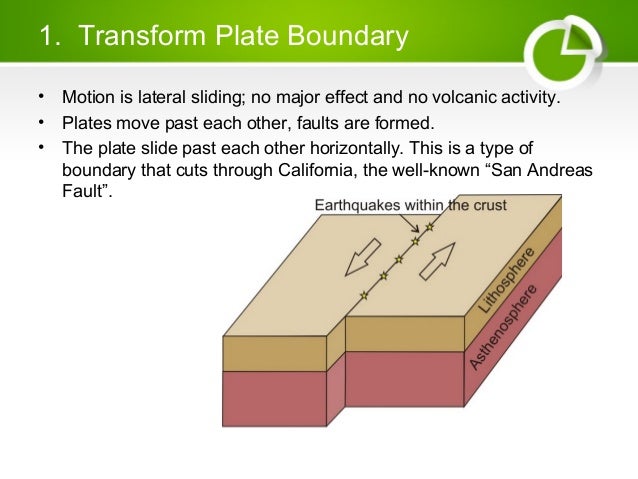

The San Andreas Fault (western US), the North Anatolian Fault (Turkey) or the Dolores-Guayaquil Megafault in the northern Andes are some examples of huge strike-slip faults transecting continental crust. Transform boundaries exist where one plate slides past another without production or destruction of crustal material. These may result in some of the most damaging earthquakes on continental crust. When strike-slip movement halts due to increased friction at some location, stresses can build up that are released in sudden slips. These structures are so-called strike-slip faults. These areas are often associated with high seismicity, as stresses that build up in the sliding crustal slabs are released at intervals to generate earthquakes. Because rocks are cut and displaced by movement in opposite direction, rocks facing each other on two sides of the fault are typically of different type and age. type of plate boundary, the transform variety, two plates slide parallel to one another in opposite directions.

The third type of plate boundary is the transform fault, where plates slide past one another without the production or destruction of crust.


 0 kommentar(er)
0 kommentar(er)
